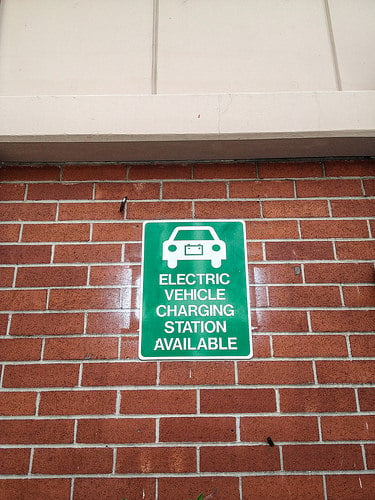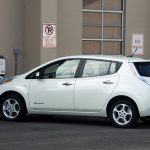How to make electric vehicles cost-effective

…but will anyone use it? Image from Tony Webster.
Battery electric vehicles, or BEVs, have the potential to play a huge role in decarbonizing transportation, but the economics still have to be worked out – consumers need strong reasons to purchase BEVs, since their range is lower than gas-powered vehicles. A recent study, What is needed for battery electric vehicles to become socially cost competitive? investigates how pricing can be configured to make BEVs cost competitive by 2020 or 2030.
The researchers assessed prices by analyzing efficient prices for both transport fuels and electricity in order to determine what battery costs would make these cars cost competitive. Some of the most significant findings? “High mileage, low discount rates and high oil prices could make BEVs cost competitive by 2020, and by 2030 fuel costs are comparable over a wider range,” write the study authors. “[The figure’s] contribution lies in careful derivation of efficient fuel and electricity prices and the concept of a target battery cost.”
First, some background: As the researchers note, the world must cut fossil fuel consumption by a great deal in order to avoid further, damaging climate change. Road transport accounts for 17-18% of CO2 emissions, and estimates show that CO2 emissions from cars are set to double by 2050. BEVs could fill a void in the transportation landscape if not for the problem of cost. BEVs’ viability depend on the future prices of oil, carbon and electricity as well as the cost and performance of the battery and drive train.
This particular study was conducted using European data, but the issue is the same in the U.S. As the U.S. Department of Energy points out, “Using hybrid and plug-in electric vehicles instead of conventional vehicles can help reduce U.S. reliance on imported petroleum and increase energy security” — especially significant given that the U.S. imports about 33 percent of the petroleum it consumes, and transportation accounts for nearly 75% of the country’s total petroleum consumption.
As the researchers argue, previous studies and writings on the subject rely on market pricing and comparisons on cost per mile ownership. Instead, for this research, the authors focused on the “full social cost” of the vehicles and on comparing gasoline, electricity and diesel. They explain their tactic: “Our approach is to identify what would need to happen to battery and electricity costs for cost parity to be the case at some future date, given various oil and carbon price projections and the likely evolution of the European electricity system.” Their formula is original because it applies “the techniques of social cost benefit analysis to the comparison and integrate[s] this with careful modelling of electricity supply.”
So, what did they find? For one, BEVs’ costs may eventually be lower than a diesel-run vehicle’s costs, but this will likely not occur before 2020. Still, BEVs may at least at present and in the near term remain cost-effective transportation options for select groups of drivers, among them frequent drivers with access to cheap electricity, long-distance commuters and wealthier two-car families. Read more about the researchers’ methods and discover the study in full online.
Related Posts
Category: Transportation

















